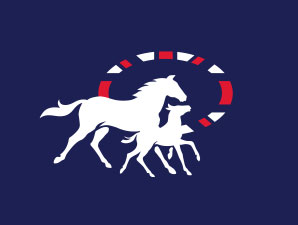Campaign Seeks to Boost GB Stayers, Races
Image:

Description:
Great Britain's Thoroughbred Breeders' Association April 13 launched a significant campaign requesting industry support to prevent the decline of the British stayer.
At a press conference in London the TBA revealed the findings of an in-depth study into British stayers and staying races along with the concerning statistics that highlight the future of the British stayer and British racing's diversity is in serious jeopardy. The TBA called upon stakeholders, including the British Horseracing Authority and racecourses, to collectively renew their efforts to support a review and protect a vital part of the sport's heritage.
The campaign serves as notice to both National Hunt and flat racing with the majority of National Hunt stallions as previous high-class, middle distance, or staying performers. With the world-famous National Hunt race, the Crabbie's Grand National, drawing in 600 million television viewers and the beginning of the flat season commencing in two days, the call-to-action acts as a reminder that the impact of losing staying performers will affect all areas of racing and the sport's future.
The report shows that proven staying sires in Great Britain are in decline and, as a consequence, National Hunt breeding is already affected.
The study, conducted by Clive Webb-Carter Bloodstock Services, underlines the concern that British-bred stayers are not only under threat, but those that are succeeding are exported due to the lack of opportunity on home turf. While 53% of staying winners in Britain from 2004-13 were bred in Ireland, the notable departure of stayers to the Southern Hemisphere is reinforced by more than 50 individual stakes winners bred in Europe who have won for Australian-based trainers since 2011.
With the key staying races providing handle for racecourses and the betting industry, they are also regarded as the races that represent the country's racing heritage. A release said the loss of the staying Thoroughbred will see a reduction in the gene pool of horses with the soundness and stamina to compete over longer distances, and as a consequence the field sizes will suffer.
The report highlighted the issue by detailing that the percentage of high-class stayers with group I performance, rated 115 or higher, has fallen nearly 30% in the last five years.
The full report can be accessed here.
In commenting on the reason behind the study, TBA chairman Richard Lancaster said: "This research was commissioned as a result of two triggers, the European Pattern Committee downgrading the Queen's Vase, and then the Bahrain Trophy being put on the 'at risk' list. Both deliver a worrying picture that the staying Pattern and Black Type program is under threat and, as a consequence, the stayer is in decline.
"The TBA wanted to ascertain a complete and thorough analysis of the breeding and racing staying landscape in order to act quickly before the issue escalated and more vulnerable black-type staying races are downgraded."
The TBA has initiated the research and campaign in order to highlight the importance of the stayer, and said it is its intention to work with the BHA and others to improve opportunities for stayers and redress some of the matters underlined. The TBA compiled suggestions and ideas of potential ways to rectify the situation:
—Introducing a limited number of maiden races for horses by stallions that won at more than 1 1/4 miles or 1 1/2 miles, similar to the conditions of the Chesham Stakes at Royal Ascot.
—Reviewing the 3-year-old staying. As an example there are no 3-year old fillies-only staying handicaps and only two races at Class 4 for 4-year-old fillies and upward. The TBA would recommend establishing some staying distance maidens for colts and fillies.
—Introducing more 3-year-old-only Class II and III handicaps. There are only three Class II handicaps for 3-year olds only and no 3-year-old has run in the Northumberland Plate in the last 10 years.
—A review of the Pattern program is required. There are only three fillies conditions races at more than 1 1/2 miles with one at group II and one at group III and one at listed level. The TBA would like to look at creating more race opportunities for fillies.
—There is an obvious need to boost the value and a limited number of opportunities for both 3-year-olds and older horses in order to ensure they remain in Britain to race and then go to stud.
